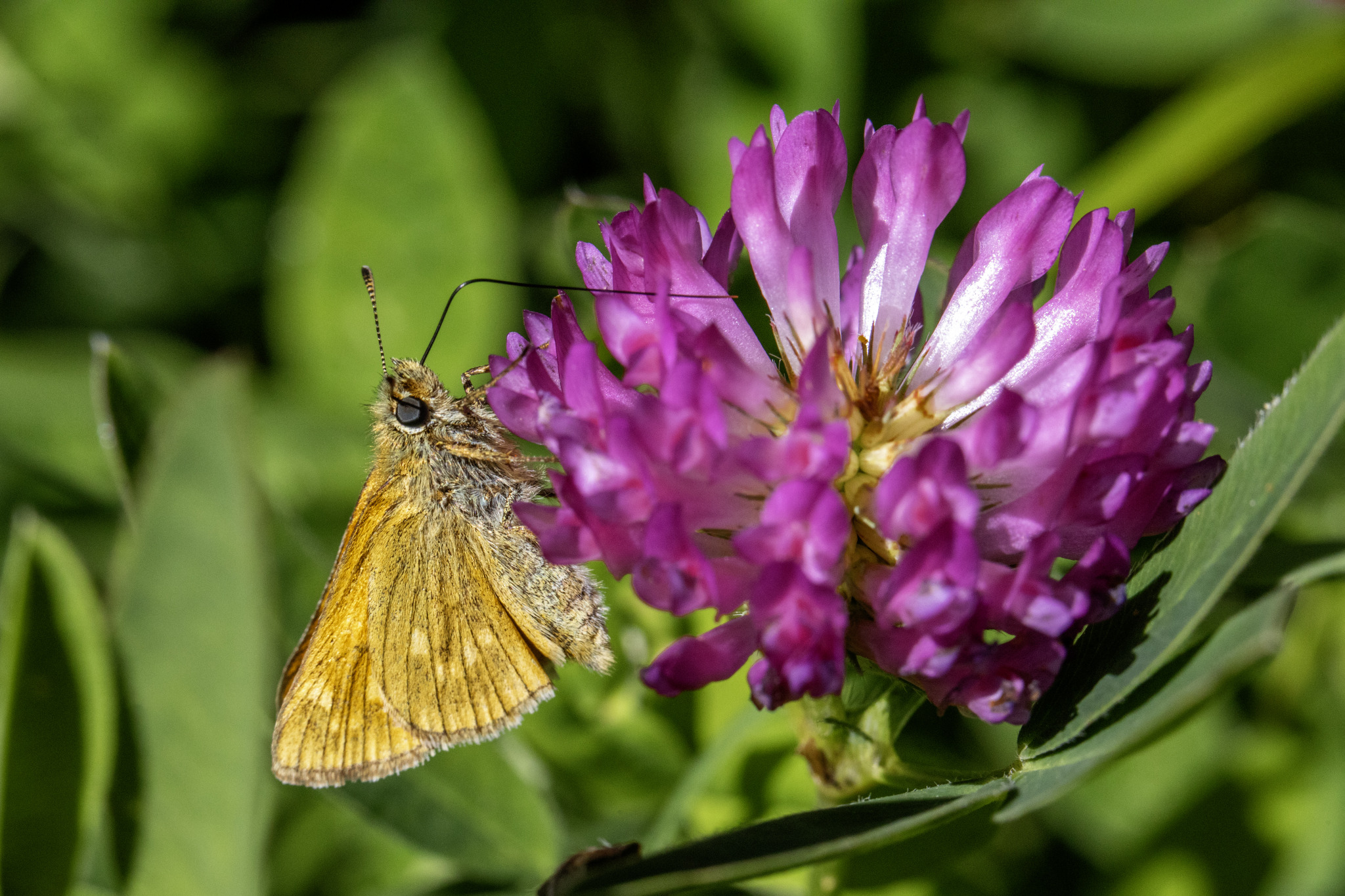The Large Skipper (Ochlodes sylvanus) is a notable butterfly species within the family Hesperiidae, commonly known as skippers. Found across Europe and parts of Asia, this butterfly is distinguished by its distinctive coloration and characteristic flight patterns.
Description
- Appearance:
- Size: The Large Skipper has a wingspan of approximately 30-38 millimeters (1.2-1.5 inches).
- Coloration:
- Males: The males are typically a bright orange with darker markings, including a pattern of black spots and lines on the forewings. The hindwings are a lighter orange with a dark border.
- Females: Females are similar in appearance but can sometimes be slightly paler or have less intense orange coloring. They also exhibit the characteristic dark spots and lines on their wings.
- Pattern: Both males and females have a distinctive pattern of dark lines and spots that contribute to their characteristic appearance.
Habitat
- Distribution: The Large Skipper is found throughout Europe, including the British Isles, and extends into parts of Asia, including parts of Turkey and the Caucasus region.
- Preferred Environment: It inhabits a variety of open and semi-open habitats, such as grassy meadows, woodland clearings, road verges, and overgrown fields. It prefers areas with abundant grasses and flowering plants.
Behavior and Ecology
- Diet:
- Larval Food Plants: The caterpillars feed on various grasses, including species such as meadow grasses and certain cereal crops.
- Adult Food Sources: Adults feed on nectar from a range of flowering plants, including clover, thistles, and knapweeds.
- Breeding:
- Nesting: The eggs are laid on the leaves of grasses, where the larvae develop and feed. The larvae are well-camouflaged and feed on the grass leaves until they are ready to pupate.
- Life Cycle: The butterfly undergoes a complete metamorphosis, including the egg, larval (caterpillar), pupal (chrysalis), and adult stages. The pupal stage is spent in a protected position, often attached to grass stems or in the leaf litter.
- Behavior:
- Flight: The Large Skipper is known for its rapid, darting flight pattern, which is typical of many skippers. It frequently flutters around its habitat in search of nectar and territory.
- Activity: It is typically active during the warmer months of spring and summer. It is most commonly seen in sunny weather when it is feeding or basking.
Conservation
- Status: The Large Skipper is generally not considered endangered and is a relatively common species throughout much of its range. However, local populations can be affected by habitat changes and loss.
- Conservation Efforts: Conservation efforts focus on maintaining and restoring open grassy habitats and meadows. Ensuring the availability of larval food plants and nectar sources is important for supporting healthy populations.
Observing Large Skippers
- Best Times: They are most commonly observed from late spring to early autumn, depending on the region.
- Watching Tips: Look for them in grassy meadows, woodland edges, and road verges. Their bright orange coloration and rapid, darting flight can make them relatively easy to spot in sunny weather.
Interesting Facts
- Name Origin: The name “Large Skipper” refers to its relatively large size compared to other skippers in its family and its characteristic skipping flight pattern.
- Camouflage: The larvae are well-camouflaged on grass leaves, which helps protect them from predators.
Summary
The Large Skipper (Ochlodes sylvanus) is a vibrant butterfly known for its bright orange coloration and distinctive flight patterns. Found across Europe and parts of Asia, it thrives in open grassy habitats and meadows. The species has a complete life cycle involving feeding on grasses during the larval stage and nectar from flowers as an adult. While generally not endangered, conservation efforts to protect its habitat are important for maintaining its populations.
Views: 997
Subscribe to the newsletter:
